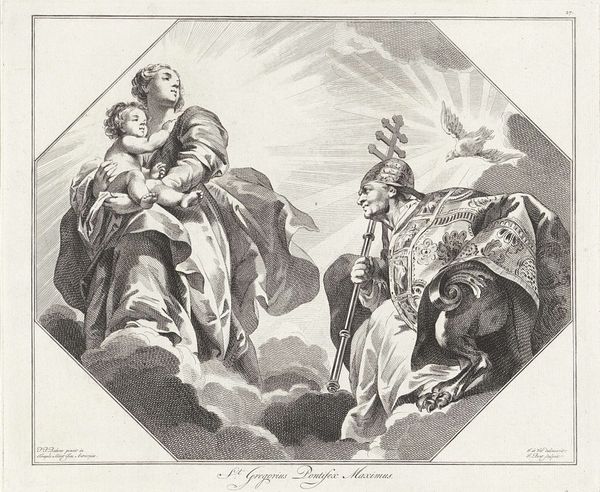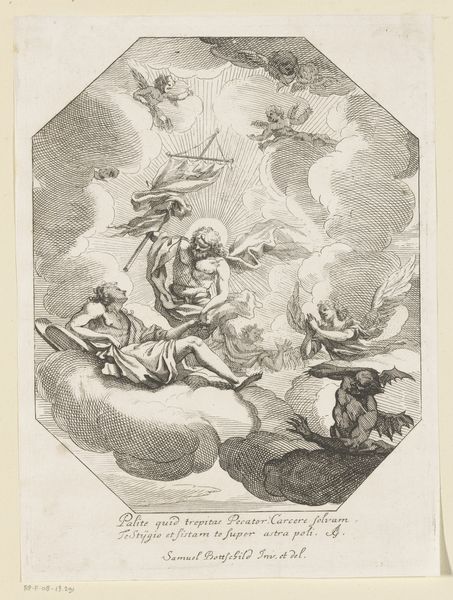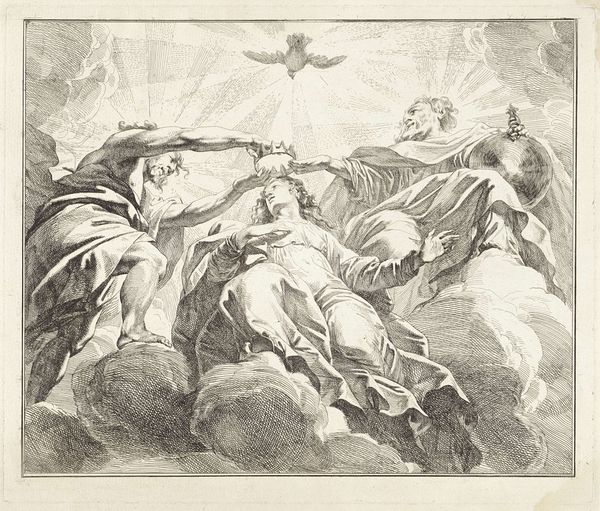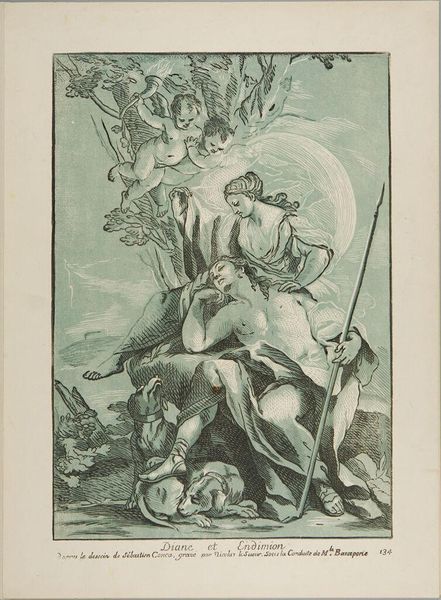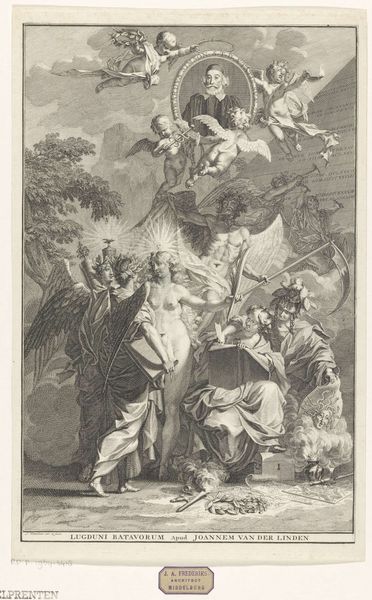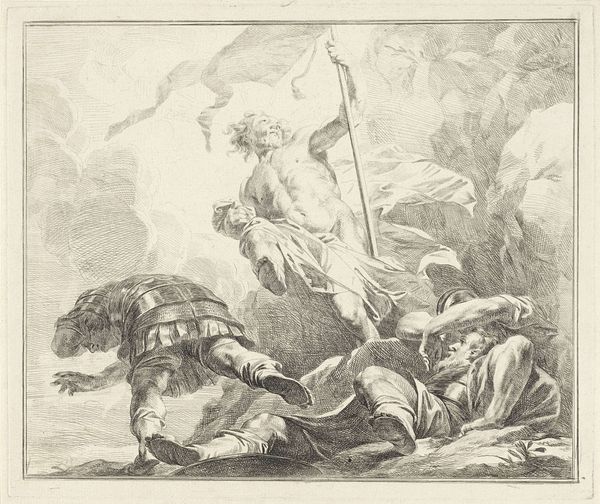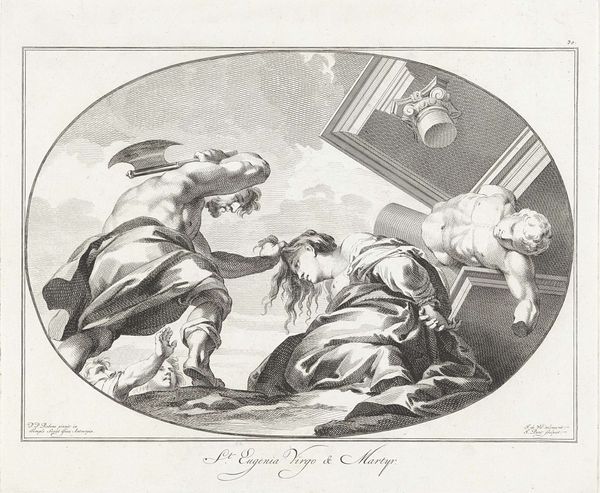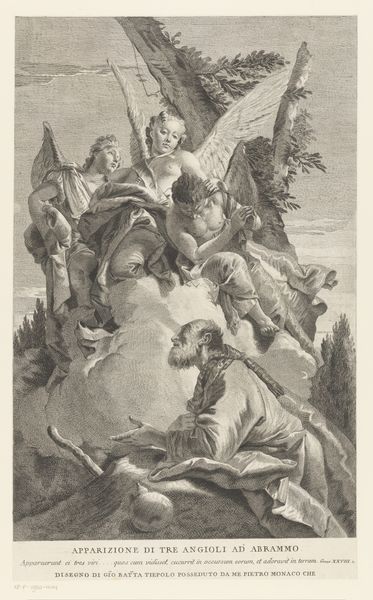
engraving
#
allegory
#
baroque
#
old engraving style
#
figuration
#
history-painting
#
engraving
Dimensions: height 340 mm, width 408 mm
Copyright: Rijks Museum: Open Domain
Curator: Here we have Jan Punt’s engraving, "H. Hieronymus," made sometime between 1721 and 1779, now residing at the Rijksmuseum. Editor: Woah, my first impression is dramatic, but heavenly too. The figure enthroned on what looks like clouds, an angel trumpeting… very Baroque, very theatrical. Curator: Precisely. Punt worked extensively as an engraver, often reproducing history paintings and allegorical scenes like this one. It is an exquisite display of line work and tonal range considering the limitations of engraving at the time. It shows his deep understanding of the conventions of Baroque art. Editor: Looking closely at the rendering of Saint Jerome—his muscularity, his aged face—the details are incredible! But I also see that it's more than a portrait. Look, a lion cowers beneath his foot. Symbolism alert. I mean, to have such mastery with essentially just lines! What kind of tools and process would he use? Curator: Engraving demands precision and patience. Using a tool called a burin, the artist would carve lines directly into a copper plate. The depth and density of these lines determine the amount of ink held and transferred to paper. Punt was likely trained within a workshop, learning techniques passed down through generations. And it's all about control really and having just the right level of pressure. You could mass-produce but always had the quality of handmade artistry at its core. Editor: Absolutely. And understanding the labor really enriches our perception, doesn’t it? It’s like imagining him meticulously etching away, building up this vision bit by bit, creating light and shadow. It really captures the Baroque taste for ornate complexity, especially within that slightly clunky, but neat square frame. It feels less religious and more celebratory. Curator: That celebratory mood reflects a society that used art to project power and prosperity. Prints made art accessible to a wider audience but equally played their part in circulating ideas that cemented the status quo of the Dutch Golden age. Editor: That’s so true! Something that feels almost otherworldly in its beauty is firmly rooted in society of the time. Well, looking at Jan Punt’s world through the lens of his work, makes you see it more clearly. Curator: Yes. Engaging with the work both enhances and challenges our view. An artwork indeed connects us to people who thought, believed, and created within it.
Comments
No comments
Be the first to comment and join the conversation on the ultimate creative platform.

